Auke Visser´s ESSO Tankvaart Mij. Site | home
The call of the sea that is full of promises - Part-1
Source : Esso Singapore News, November, 1978.
Or a tanker ride down the Malacca Straits - Part-1
By Lam Yeen Fong
A VLCC (Very Large Crude Carrier) is hardly anybody’s idea of a luxury passenger liner — but among VLCCs, the Esso Bonaire surely comes delightfully close to being a luxury vessel of its class. And if the Bonaire is typical of tanker operations, there certainly is a good life out at sea.
The Esso Nederland taner is one of the monthly three or four crude carriers that frequent the Malacca Straits on its way here to
discharge its load of crude from the Persian Gulf at the Single Buoy Mooring (SBM) off PAC.
I took a ride on the Bonaire for a first-hand experience of the life on board a crude carrier.
The VLCC is completely equipped with spacious cabins, lounge and bar, dining room, library, recreation room and swimming pool.
Good meals are in abundant supply — and while sailing is demanding work, it also allows for a heightened degree of independence which makes for a greater sense of work fulfilment.
On first sight from 3,000 feet up in the air, the 267,000 dwt carrier was strikingly elegant. Her speed of 12 knots (1 knot I 1.85 m.) barely sliced the placid surface of the Malacca Straits.
Only after you have landed do you feel the impact of its mammoth spread.
It boasts a length of 344.5 m., a hull of about 29 m. and a 20 m. tall superstructure.
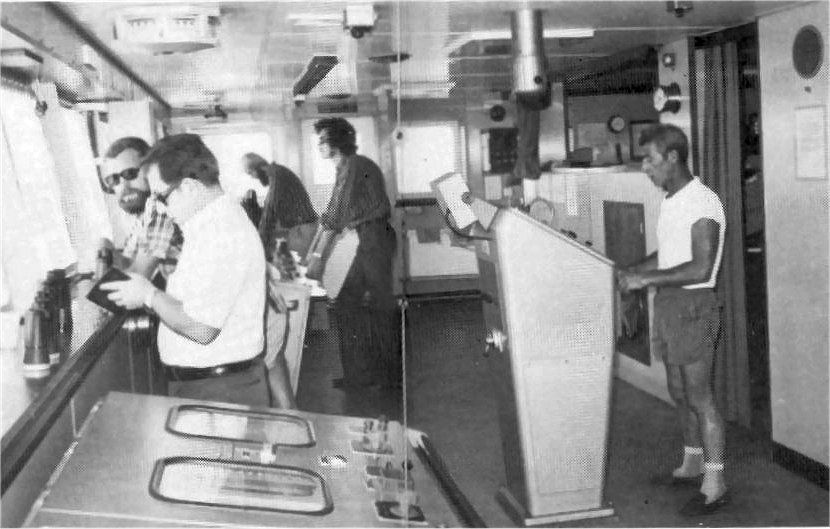 The nautical staff keeping watch on the bridge. Captain Kuijpers extreme left, second from left is Captain Venturi, another visitor on board ship from ESPL. 3rd Mate (HJ Frits) van Woudenberg. On the right is an able-bodied seaman A.R. Silva, who is adjusting the ship 's direction.
lt has 17 crude oil cargo and five ballast tanks. The smallest cargo tank can hold some 20,000 tons while the largest, 45,000 tons of crude. Total capacity: 250,000 tons or two million barrels of crude oil.
So steady was its passage down the Malacca Straits that when a Sumatran squall met us early on the morning we entered Singapore waters, there was no sign of any disturbance except for the shotblasting of rain streaks at the cabin port holes.
Life on board the Bonaire — or on any VLCC for that matter continues with little or no disruption, irrespective of the weather. It is a selfcontained world ruled by regularity and a pervading sense of privacy.
The crew of 28 work quite independently of each other in two different departments.
The nautical department is responsible for the nagivation of the tanker while the technical department looks after the mechanical operations -- including maintenance and repair — of the vessel. Though both functions are computercontrolled, the crew provides
the necessary manual coordination.
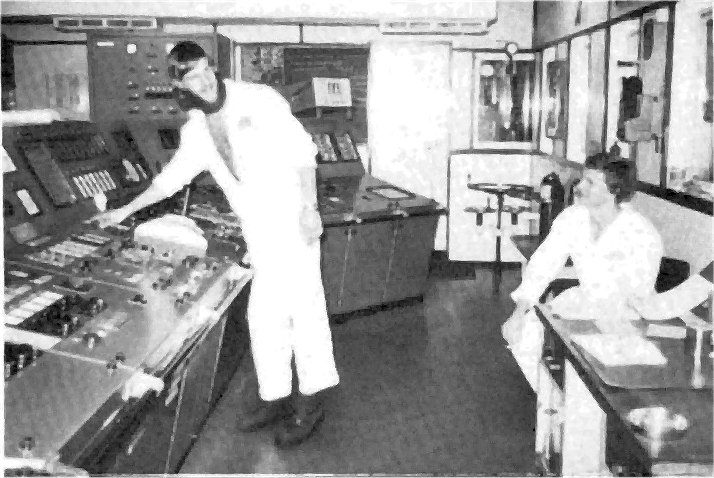 (Left to right) Fourth engineer Ruud NadeIs and Technical Apprentice Peter de Wit at work in the engine control room.
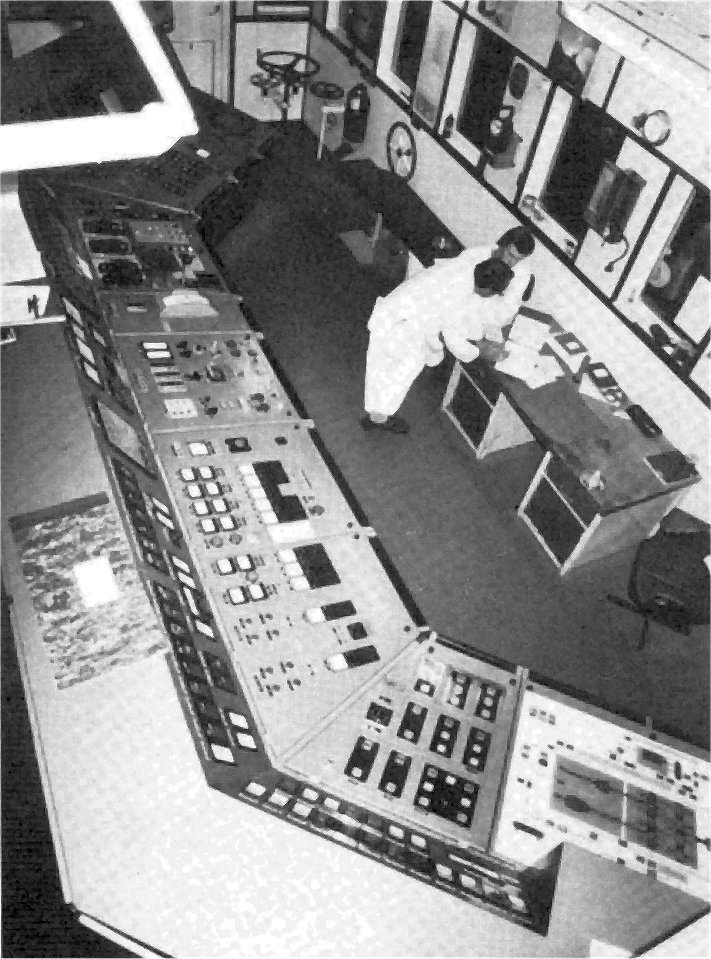 Seen from top, Chief engineer Jacobus Pronk, seen on his back and ??.
Thus, while the Bonaire is automatically steered by its built-in gyrometer and magnetic compass, two nautical officers and one nautical apprentice — two of whom have been assigned to the Bonaire for a one-year apprenticeship following graduation from a nautical academy — were continually on the alert on four-hourly shifts during the transit of the Malacca Straits.
This was necessary given the busy traffic, the irregular depths of the seabed and the relative lack of navigational aids in the area.
According to Captain Kuijpers, who as Master of the Bonaire is the administrative and planning head: “The Straits is very narrow
for a deep-draft vessel like the Bonaire. We often have to vary our speed over short distances. This is also necessary for us to meet the tide?’
Consequently, the tanker’s direction often had to be manually adjusted at the steering wheel — by an able-bodied seaman who alternated his duty with keeping a lookout for approaching vessels.
With each change in direction, the nautical officers were recording the tanker’s bearing to determine its position, at the same time that radar checks ensure that the vessel is on a non-collision course.
As a navigational safeguard in the Straits, all ships are obliged to observe a voluntary traffic separation scheme where the passage is divided into tvrdn lanes of opposing directions, much the same as a two-way street.
There was generally heavier traffic in the night right through to the early hours of the morning — on account of the fishing boats. On our last night at sea before we reached Singapore, we passed about 20 vessels of all types and sizes within a few hours.
The late watch on the bridge has the added bonus of that magical beauty that belongs only to the night.
Outside, the far horizon to our left was dotted with tiny points of amber — the only things that were awake in a sleeping fishing village or a coastal town of Malaysia. The right horizon looking towards Sumatra was less brightly lit — you could make out faint
wavy lines that separated the hills from the sky.
Ahead of us were two flashing beacons while all around, shadowy shapes and random spots of light passed by leisurely.
The water was pitch black, its movement punctuated by a caressing rhythm on the sides of the Bonaire — while the sky had its coronet of moon and stars.
Unlighted but for the brightly speckled radar screen and the compass, the bridge was filled by a cosy darkness within which the shadows of the nautical crew tred gently — as if they have silently consented that any heavy movements would dispel the glory before their eyes.
Even during the day, the Bonaire would move on as quietly as the sky would change its colour — except for the occasional music from the bar where the off-duty staff members would congregate for a drink, the reverberations of the boilers in the engine room or the sound of laughter and earnest conversation from the crew.
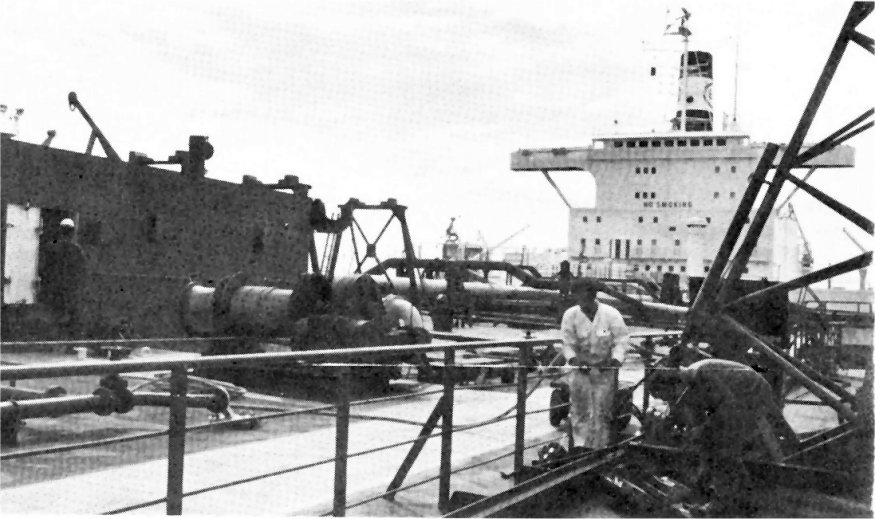 The deckhands do daily maintenance and repair.
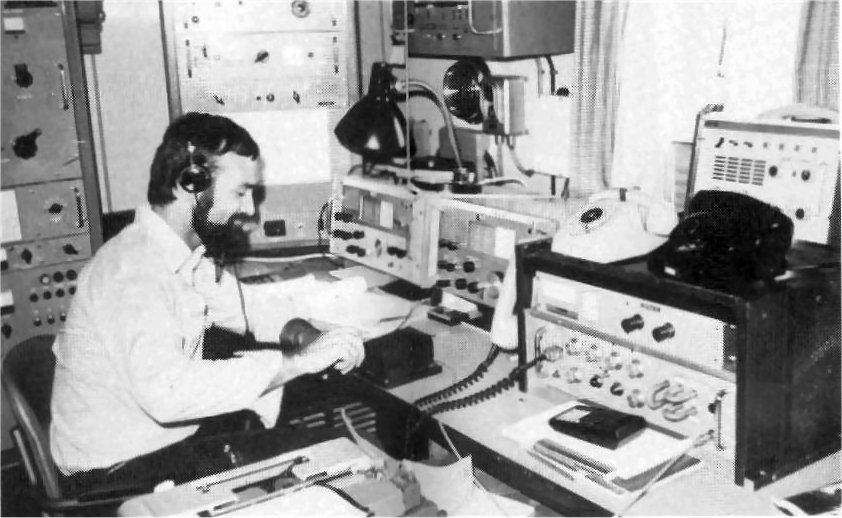 The radio officer A. H. Muysers, is an one-man show, and likes being his own boss.
All sailors share a kindred spirit of silence with the sea. This, according to Captain Kuijpers who comes from a long line of sailors,
and has had 14 years of seagoing experience, is a point of strength. For quite without exception, the Bonaire crew would fit Captain Kuijpers’ description of the model seafaring character:
“A quiet man. He is cool, calm and logical — it shows he has a good euqipment of nerves. A man who knows how to handle himself
in a crisis." Hardly the rough and rowdy sailor stereotype that is fixed in most landlocked minds.
This was clearly evident in the cool coordination and easy competence that the crew displayed througiout the two and a half days’ journey down the Malacca Straits.
|